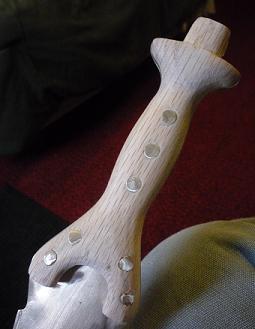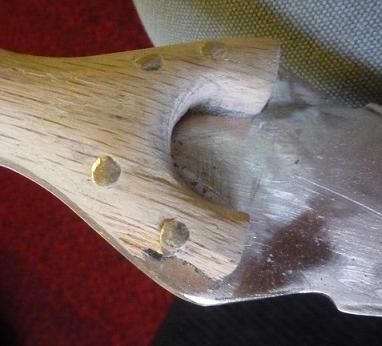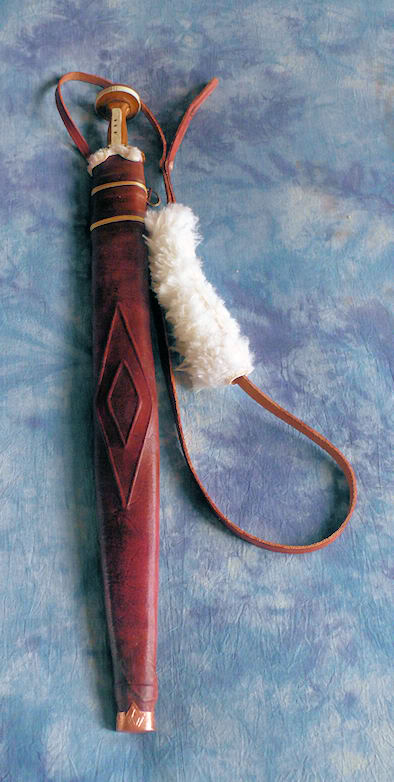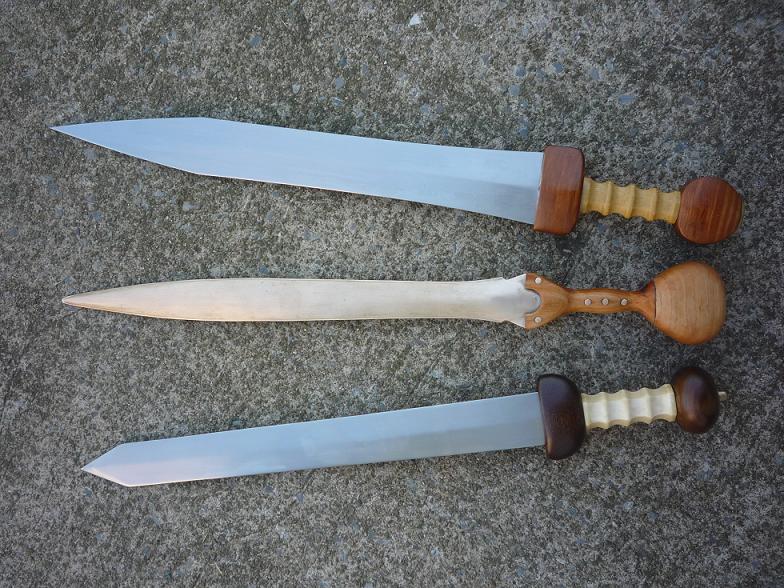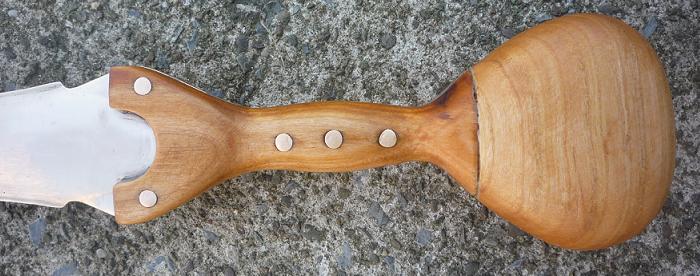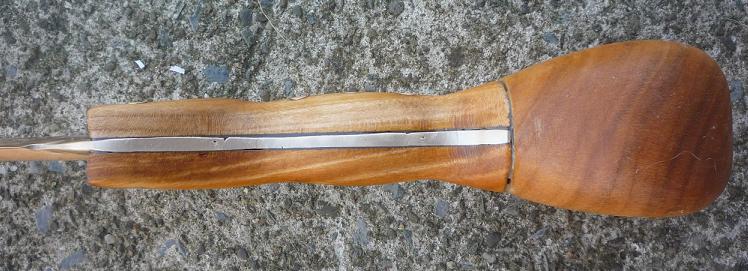Posts: 278 Location: Lock Haven Pennsylvania
Thu 12 May, 2011 9:48 pm
Actually I spent some time today messing around with this sword. I was decapitating dandelions in my friends yard to get acquainted with accuracy of swinging this bronze. I then preceded to clear a 10x10 section of this nasty invasive plant called Japanese Knot Weed. The stuff is easy to cut, and does not mar the blade. A plastic bottle left a few minor scratches, which is easy to do now that I have this thing polished to a mirror finish. I forgot to mention that I had not even properly sharpened this sword, and it still demolished a bottle with ease.
I would like to do a video, and may. I often though to myself that there are no good bronze cutting videos. This sword has been a challenge for me, and I am satisfied with what i have ended up with. The pommel can always be altered. I am afraid to make the pommel lighter, as the
point of balance is around 4.5ins from the cross. I may add some bone inlay to the pommel, and bring the weight back up.
It feels good in the hand. I may round the edges of the pommel a bit more. In a good swing the hand ends up hugging the side of the pommel. The pommel will most likely end up being a bit smaller. I really like the design, and have to look at it, and use it more before i figure out what I will do with it. I still occasionally tweek hilts that I have assembled three years ago already. Sometimes you just need to do something, and then use it and ponder it for a while.
I am not so sure that the pommel is much larger that other bronze repo that i have seen. It is just shaped differently. I have seen a lot of round forms that flare out were the grip meets the pommel. I like the way those hilts look, but could never imagine that they would feel great in use. i have no experience with these impressions, and wanted to do something differently. This has been an experimental piece for me, and I may do some inlay, even though there is no evidence for such.
Julien,
it is kind of a curse to fuss over small things, but the end result is always satisfying, and the lessons learned are valuable. It is comforting to know that I am not alone.
